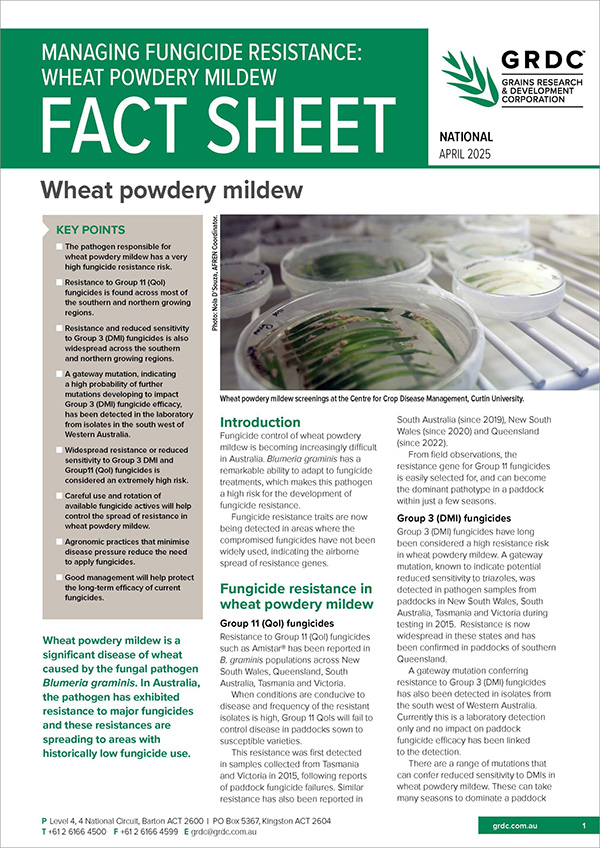Managing fungicide resistance in wheat powdery mildew
Managing fungicide resistance in wheat powdery mildew
Published: 8 Apr 2025
This fact sheet shows how to use agronomy and fungicides to manage wheat powdery mildew. It also gives a summary of current fungicide resistance problems.
Key points
- The pathogen responsible for wheat powdery mildew has a very high fungicide resistance risk.
- Resistance to Group 11 (QoI) fungicides is found across most of the southern and northern growing regions.
- Resistance and reduced sensitivity to Group 3 (DMI) fungicides is also widespread across the southern and northern growing regions.
- A gateway mutation, indicating a high probability of further mutations developing to impact Group 3 (DMI) fungicide efficacy, has been detected in the laboratory from isolates in the south west of Western Australia.
- Widespread resistance or reduced sensitivity to Group 3 DMI and Group11 (QoI) fungicides is considered an extremely high risk.
- Careful use and rotation of available fungicide actives will help control the spread of resistance in wheat powdery mildew.
- Agronomic practices that minimise disease pressure reduce the need to apply fungicides.
- Good management will help protect the long-term efficacy of current fungicides.
Want a printed copy?
Printed copies of some publications are available for growers, advisers and farming systems groups, for personal use and distribution at GRDC events.
Contact GroundCover Direct on 1800 11 00 44 or email ground-cover-direct@canprint.com.au to request copies. Publications are free but postage and handling costs may apply.
Download PDF
Region: National
GRDC Project Code: CUR2302-002RTX,

